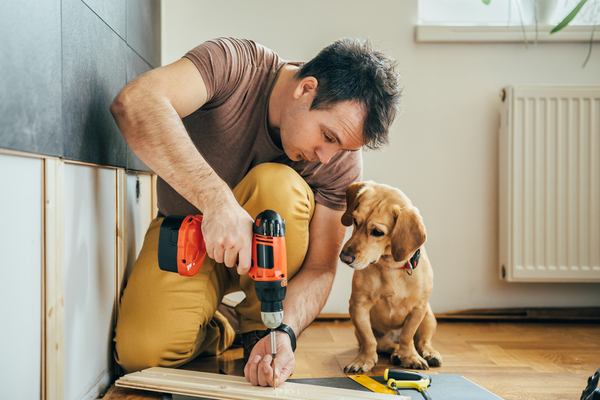

Whether its remodeling a kitchen or bathroom or building a new deck outside, most homeowners will eventually want to make changes to their homes. While these improvements usually cost much less than it would to buy a new home, they can still be expensive. For example, even minor kitchen remodels cost an average of $21,000 in 2018, according to Remodeling Magazine, with mid-range kitchen updates averaging as much as $64,000. Many homeowners do not have that kind of cash lying around. Fortunately, there are at least four different ways to pay for a home improvement project.
- Home Equity Loan
A home equity loan is a second mortgage that uses your home as collateral. Most lenders will allow you to borrow up to 85% of your home’s value and you can receive the loan as a lump sum of money. Because of the loan-to-value limits, home equity loans are best for those with substantial equity in their home. These loans can be great because you can have loan terms of up to 30 years, creating very manageable monthly payments. Home equity loans also offer the payment predictability of fixed interest rates. What’s more, the rates are typically lower than on any other type of loan because your home acts as collateral and reduces the lender’s risk. However, because your home is tied to the loan, if you default for any reason, you may be at risk for losing your home.
- Home Equity Line of Credit (HELOC)
HELOCs are similar to home equity loans in that they are second mortgages and are tied to the value of your home. HELOCs operate more like a credit card account though. You are approved for a loan limit and then you can borrow as much or as little from that limit as you need for your project. This is helpful for those who do not know ahead of time exactly how much their home improvement projects will cost. Homeowners only repay the amount that they borrow. HELOCs are typically variable interest rate loans – they are tied to a certain market index and can change over time. Still, those rates are usually lower to begin with than other options because your house is used as collateral. Both home equity loans and HELOCs may require some closing costs or other fees upfront.
- Credit Cards
While credit cards are not the best option for home improvement projects because of their high interest rates, they can be helpful in some cases. For example, if you have a relatively small project and you feel you could repay the money within roughly a year, a 0% APR credit card could fit the bill. There are many credit card lenders that offer balance transfer cards with 0% APR for up to 15 months. Of course, if you do not completely repay your home improvement costs in that time you could face steep interest charges of up to 25%.
- Personal Loans
Personal loans also charge exorbitant rates but can be a solution for those who do not have much home equity. They do come with fixed interest rates and payments and they do not put your home at risk if you are unable to repay. Borrowers should be aware that without excellent credit the interest rates can be quite high.
For borrowers who qualify, home equity loans and HELOCs are an ideal way to finance a home improvement project. For those who don’t, credit cards and personal loans could be an option.

